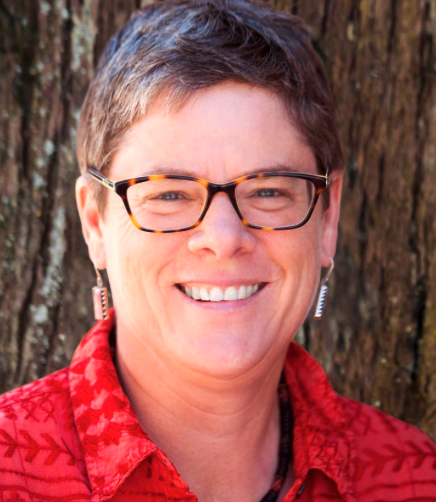 As my friends Michele and Jen over at TeachNow are digging into, teaching is more than just dumping out your knowledge and experience on people. There are some real challenges to helping someone learn and implement new information.
As my friends Michele and Jen over at TeachNow are digging into, teaching is more than just dumping out your knowledge and experience on people. There are some real challenges to helping someone learn and implement new information.
It gets harder when what you’re teaching has a bad reputation, and so you need to help people shift their perspective on it, to find the good, as Jen says.
It gets even more challenging when survival is at stake, when people are worried about making just making it. Survival causes people to tighten up, to want to rest into what’s already known instead of learning something new.
This is why teaching business skills to people who really care about their work can be so challenging. I’ve been teaching for more than twenty years in a variety of fields, including emergency medicine, computer science, nonprofit fundraising, spiritual healing and for the last ten years business skills for the self-employed and micro businesses. That spans practical hands-on knowledge, theoretical knowledge, and emotional/spiritual experiences.
Labels and Teaching
Charlie Gilkey, his partner Angela Wheeler, my collaborator and our operations chief Kate Wiliams and her partner Nancy were over our place for dinner the other night, and a topic that surfaced was labels. Specifically what people in our field of work call ourselves.
Charlie bounces back and forth between consultant, coach, and philosopher depending on the audience, among other things.
I’ve been avoiding using a label for years, because it doesn’t always feel useful. People often call me a “coach” even though I have no formal coach training, and my friend Molly Gordon who certifies coaches for ICF tells me I would pass their master coach certification with flying colors.
I’ve had extensive training in spiritual healing, but there’s trouble with calling yourself a “healer” when truly healing originates within. One can be a catalyst for healing, I can facilitate a healing process, but I can’t actually heal anyone.
The label I know that Kate, my wife Holly and I all resonate with strongly resonate with is “teacher.” Kate has been a director at the National College of Natural Medicine. Jason Stein, one of our practitioners, is a dean at the Oregon College of Oriental Medicine. We are all about education.
But because of my paramedic past, because of our team’s past history with medicine, the education we’re into is practical, hands-on, implementable, usable stuff. Before almost anything else, I was a paramedic Field Training Officer and preceptor- which means I took brand-spanking new paramedics out of school, and mentored, “precepted” them into become street-wise medics who could actually perform on the job.
This is a tremendous strength of ours at Heart of Business. And yet, there are things that have been learned about the human brain that continue to amaze us.
For instance, the human brain has a really hard time learning and thinking. We want to learn, we love learning, but we can only do it well under certain conditions. Change those conditions and we can’t learn. For instance, make a goal a little bit too hard, a little bit out of reach and the brain shuts down and wants to do something easier.
But make it too easy? We get bored and give up.
Enter Instructional Design
One of our team members, Judy Murdoch, the insightful Dick Carlson of Techherding.com, @juliemargretta at Harvard, among others, have helped us learn about instructional design. What I’ve gathered from a lot of reading and conversations is that instructional design is a simple concept: pay attention to how you design your trainings and people can learn. It involves being clear about what you want people to learn and assessing whether they learn it. It involves designing environments, exercises and interactions that facilitate learning.
It’s incredibly important and it’s something that is nearly entirely ignored in the field of small business training. We’re getting on board ourselves.
Changes to Opening the Moneyflow 2011
This is the major reason we’re changing the format of Opening the Moneyflow 2011. Yes, many of the participants were overjoyed at what they learned this past year. And some weren’t as happy.
The reason? We followed the pack and made a large training. We had three trainers and sixty students, so we figured we had a good ratio of one person to twenty students, and as a group we could back each other up.
It worked. And there were challenges. One big challenge is that in a group of sixty people, there were many different needs. We were trying to catch a balance between caring for people and making it affordable.
This leads to the changes we’re making.
Change Number One: Three different levels.
People need different things, so we’re created different levels. One level is a DIY level with a bare-budget price. One level is small group work, no more than six people, with one of our practitioners. And one level is intensive combination of individual one-on-one work and group work in a small group of no more than eight with me, Mark.
Change Number Two: Class Time is For Transformation and Learning
Instead of me teaching the content in the classes, we’re going to be offering the content in a combination of recorded audio and PDFs. Group time won’t be lectures, it will be discussion, strategizing, healing, implementation.
Change Number Three: Assessments and Study Plans
Each person who joins will take a detailed assessment of their business, so we can create a personalized study plan with you. You won’t just follow a curriculum as part of a group. Instead we’ll take a look at where your business is, your strengths and weakenesses, your struggles and successes, and we’ll plot a plan for you to move forward.
Change Number Four: Understanding Personality Differences
We’re a big fan of the Enneagram over here, and Kate Williams is undergoing an intense training to learn even more than she already knows. If you’re not familiar with it, the Enneagram is a typing system, like Myers-Briggs for instance, and it is very subtle and complex, with many nuances to it. It doesn’t put anyone in a box, but it does help us identify how we relate to the world around us.
Each participant, if they choose, will get an understanding of themselves through the Enneagram system, which will help further personalize the learning experience, help us as teachers work with you in ways that you learn best, and even help you understand your relationship to spirituality at a deeper level.
What Won’t Change: The Heart and Spirit of What We Do
We’re dedicated to implementing these practical pieces around learning and instructional design so that we can help people totally transform their businesses.
And we’re going to be delivering it in the same heart-felt container we always do. I am personally involved in a Masters of Divinity program in Spiritual Ministry and Sufi Studies with my Sufi teachers, deepening my understanding of our relationship between the Divine and the physical world. At the same time that we’re heightening our educational efforts, we’re deepening our spiritual presence.
Our goal? To have you know deeply that every act of business can be an act of love, and that your business can thrive in making a difference and being effective.
Although the total number of spots won’t be any less, there will still be room for about sixty participants, more than half of those will be at the bare-bones level.
If you want one of the interactive, small group spots, there will only be 26 of those. 18 in three small groups of six with our practitioners, and eight more spots in a small group with me.
I wanted to be open about our learning process and some of the changes. And I wanted to collect my thoughts as I start this second day of organizing the sales page. I hope it’s helpful.
Now, how to get all of this information, and more, available on an easy-to-read sales page. Hmmm…







8 Responses
I love the insight and direction of this post, Mark. It’s wonderful to behold!
🙂 Thanks, Charlie. I want more of that conversation we were having…
Mark, I’m going to link to this post inside the TeachNOW members’ area because it’s such a valuable, transparent sharing of the learning curve of serving a wide range of people, scaling to larger groups, holding the heart of what you’re teaching, and improving year after year after year.
So excited to hear how it unfolds for people next year!
Thanks for linking to it, Michele. It’s been quite a journey for us.
As a current MoneyFlow participant, I have to say these changes are exciting and feel so very right. The course has been great this year, and the changes clearly reflect experience and will make it even stronger.
I especially love the two aspects of choices of different levels (best of all the one with you) and also using the phone sessions for discussions, questions, etc., rather than teaching.
Hi Lori- so great to hear from you on this. I always feel some slight pang of guilt when I evolve something, as if the previous version weren’t good enough, and people are being robbed just because they weren’t in the next version. Silly voices in my head…
I have been struggling with the “anxiety” of starting new projects for years. I have a very creative mind and always get excited about new ideas. Then I do all the work to get ready for the launch and right when I should be most excited anxiety sets in. I know it’s the constant money pressure that causes it, but it sure makes it hard to achieve success. It seems like fear and anxiety shut down the whole creative process.
I so hear you, Mike. Have you seen this article?
The Missing Ingredient Before You Launch a New Offer:
http://heartofbusiness.com/the-missing-ingredient-before-you-launch-a-new-offer/